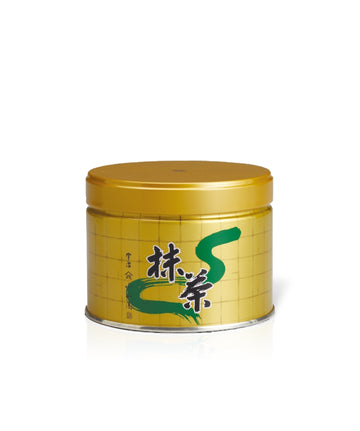Chajyu-No-Mukashi
-
Express tracked delivery:Oct 21 - Oct 25
-
Free Shipping & Returns: On all orders over
CHF 500 ($650/£470)
Chajyu-No-Mukashi
Koicha (thick tea) grade Uji matcha.
Originating from Kyoto Prefecture, Japan, this matcha is distinguished by its unique and exceptionally mild flavour profile, offering a remarkably intense yet delicately light body. Its creamy and full-bodied aftertaste endures for an extended period, particularly when prepared as a thick tea (koicha). When consumed in this form, one can appreciate the fresh, tender green notes complemented by the aromas of toasted seeds and roasted coffee beans. To fully appreciate its flavour, it is essential to use water at an appropriate temperature during preparation.
The term Chajyu no Mukashi "茶寿の昔" carries significant meaning: "Cha" (茶) represents tea, while "寿" (pronounced here as "jyu") symbolizes longevity and the celebration of auspiciousness.
Regarding the usage of the terms "mukashi" and "shiro," these expressions appended to tea names serve as indicators of grading, distinguishing between thick and thin teas, respectively. Historically, only "mukashi" was likely employed initially, with "shiro" emerging in later periods.
The word "mukashi" is believed to be a combination of the Chinese characters for "twenty" (廿) and "day" (日). Importantly, March 20th (廿日) on the lunar calendar is traditionally recognized as the day when the finest tea leaves are harvested.
The term "shiro" gained prevalence during the era of the third shogun, Tokugawa Iemitsu. It is said to have originated when feudal lords requested Uji tea masters to produce tea that was “thin” or “light.” Although the precise meaning of “shiro” at that time remains unclear, it is generally understood to refer to variations in taste. Historical records indicate that Furuta Oribe preferred a darker green tea, whereas Kobori Enshu favored a lighter variant. This distinction between 'dark' and 'light' tea may also be attributable to differing tea preparation methods in Uji.
While alternative theories regarding the origins of "mukashi" and "shiro" exist, it is reasonable to assert that "mukashi" has been in use since ancient times, whereas "shiro" became common from the Edo period onward. Subsequent generations of tea masters replaced the traditional term "mukashi" with "shiro," both of which had previously denoted tea grades, thereby establishing "shiro" as the more prevalent term.
Although the precise impact of historical changes in the tea ceremony on the meanings of “shiro” and "mukashi" remains uncertain, these terms undeniably reflect evolving trends and cultural shifts over time and continue to be used today.
“All items are sold in their original packaging from the manufacturer. Sealed and unopened.”



